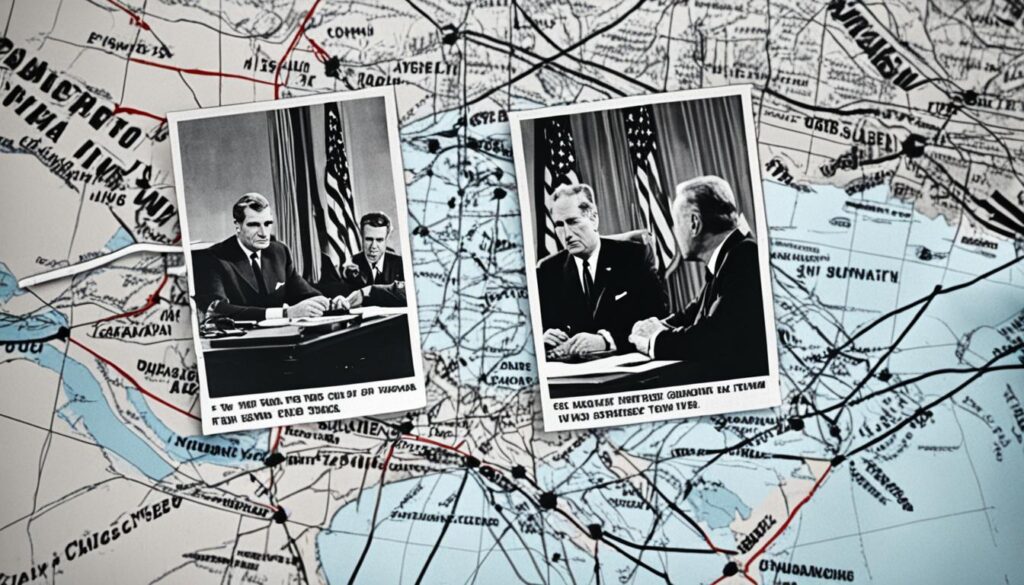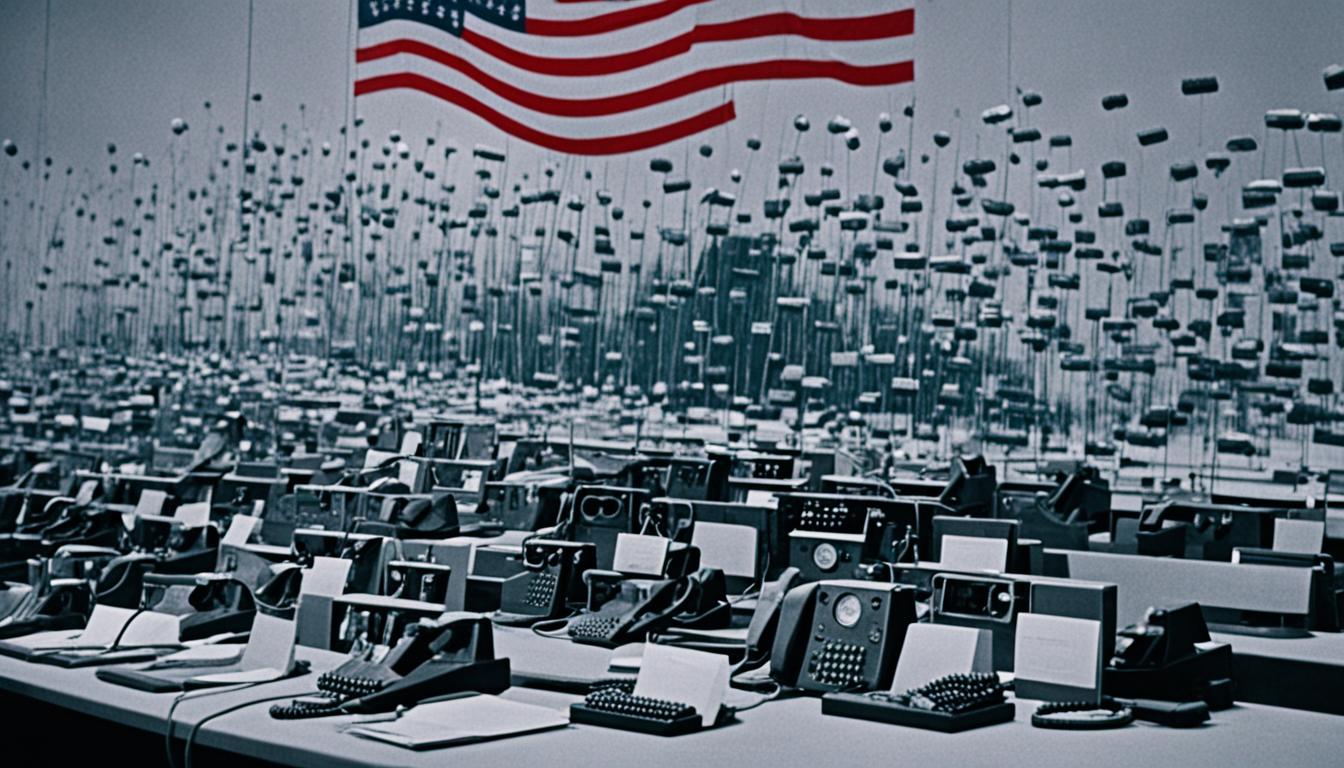The Cold War era was intense, with a lot of tension between the U.S. and the Soviet Union. But there was no “red phone” hotline for U.S. presidents. Instead, the Washington-Moscow hotline, started in 1963, was a key system for preventing nuclear crises.
This hotline was not a phone but a teletype machine. It was placed in the Pentagon, not the White House, as movies often show. It was vital for keeping U.S.-Soviet relations stable during the Cold War.
In 1967, President Lyndon B. Johnson used the hotline for the first time during the Six Day War. This event was a big deal in its history. Over time, the hotline changed with new technology to keep leaders connected.
Origins and Misconceptions of the Washington-Moscow Hotline

In the 1950s, the idea of a direct link between Washington and Moscow started to take shape. But it became urgent after the Cuban Missile Crisis in 1962. This crisis showed how slow diplomatic communications during nuclear tensions were dangerous.
Messages took hours to send, raising the risk of misunderstandings that could lead to war. To fix this, the United States and Soviet Union made a “Memorandum of Understanding” in Geneva. This led to the creation of the Washington-Moscow Hotline on August 30, 1963.
The hotline was a key step in preventing nuclear war. It wasn’t a red telephone, but used teletype machines connected by a transatlantic cable. This system allowed for clear, written messages, cutting down the chance of misunderstandings.
The hotline linked the Pentagon and the Kremlin, not the White House and Soviet leaders directly. It was a crucial tool for improving talks between the superpowers. It gave leaders a direct way to share their intentions and prevent escalation during tense times.
This Cold War technology was a big step towards better crisis management and preventing nuclear war. It showed the importance of clear diplomatic communications.
Evolution of the Hotline Technology
The Washington-Moscow hotline has seen big changes since it started. In 1971, it began using satellites like Intelsat and Molniya II. This made sending messages faster and more reliable between the two superpowers.
In 1986, fax capability was added. This let leaders send documents and pictures quickly. The messages were secure thanks to strong encryption.
By 2008, the hotline became a secure email system. This change moved it to modern digital ways, making messages send fast. It used commercial software for chatting and emailing, and fiber optic cables for backup.
The hotline always kept its messages safe. It started with a shared one-time pad system, then moved to digital encryption later. These updates kept the hotline key for handling crises between the U.S. and Russia.
Historical Usage and Significance of the Hotline
The Washington-Moscow hotline was crucial in handling crises between U.S. and Soviet leaders. It was set up in 1963, reducing communication time from hours to minutes. It proved its value during big events like President Kennedy’s death and the Six Day War in 1967.
U.S. presidents like Lyndon B. Johnson, Richard Nixon, and Jimmy Carter used it to avoid misunderstandings. This could prevent nuclear war. It was key during the Yom Kippur War of 1973 and the Soviet invasion of Afghanistan in 1979.
Today, the hotline is still in use, with both sides sending test messages every hour. It’s more than just a way to talk; it helps build trust between leaders. Even though it’s not as new, it still helps prevent accidental nuclear war in U.S.-Russian relations.

Leave a Reply